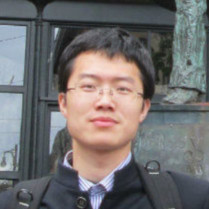Pengliang Yang
Contents
Please tell us about yourself
I am Pengliang Yang, an associate professor from School of Mathematics, Harbin Institute of Technology in China. I started to use Madagascar in 2013 when I was a visiting PhD student at University of Texas at Austin under the supervision of Professor Sergey Fomel. I benefit from the use of Madagascar even in my postdoctoral research in France on multiparameter seismic full waveform inversion. A lot of computer programs I developed when employed as scientist by Electromagnetic Geoservices ASA in Norway has a strong imprint of the coding style I learned from Madagascar. I wish I can pass the skills and the good practices learned to the next generation of the students.
When did you first hear about Madagascar?
It was 2010 on an international workshop on in Hainan Island. An invited speaker - Professor Tariq Alkhalifah - mentioned that there exists a useful seismic data processing software called Madagascar, which is open source and shares similar features as Seismic Unix but more advanced in certain aspects.
What was the most difficult part in learning Madagascar?
Understanding the data processing workflow built by SConstruct using many programs developed by other developers is more challenging for me. In particular I am unaware of the impact of the parameters used in these programs if they are not properly commented. Indeed, Madagascar is an effort of a number of volunteers with detailed knowledge based on personal logics which can may sometimes be difficult to know.
From your contributions to Madagascar, which one is your favorite?
The numerical modeling and full waveform inversion codes I wrote using CUDA GPU programming.
What advice would you give to those who wish to learn Madagascar or to contribute to it?
Learn by use; follow the examples that you can understand, adapt them for yourself. To contribute such that others can benefit from what you did, you should develop codes with good practices - in a way that can be easy to understand, more consistent with math and physics. Sometimes, give a credit to important references that may help the users a lot!
